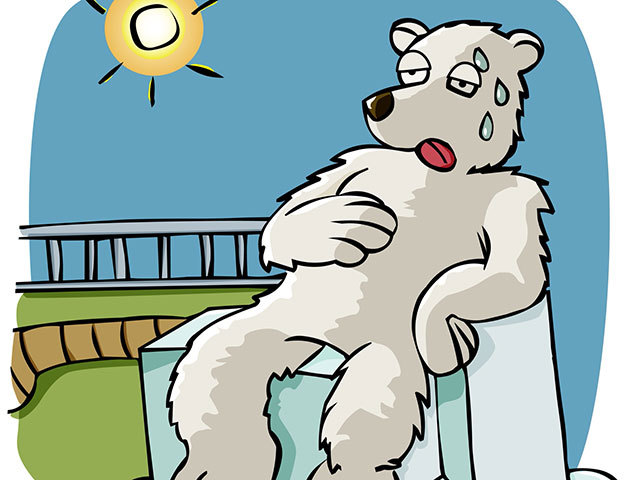
Summer is here at last… even in the North Sea where flat, glassy calms lasting for days were recorded during July.
But beware – although we all welcome the heat, as always, there is a “But”.
Even short periods of unexpected high temperatures can cause serious health problems. In this month’s column I outline the warning signs and tips on what to do for two of the most important heat related health problems – heat stroke and heat exhaustion.
Heat Stroke
Heat stroke occurs when the body becomes unable to control its temperature: the body’s temperature rises rapidly, the sweating mechanism fails, and the body is unable to cool down.
Body temperature may rise to 106F (41.1C) or higher within 10-15 minutes. Heat stroke can cause death or permanent disability if emergency treatment is not given.
Recognising Heat Stroke:
The warning signs can vary from person to person but may include:
- an extremely high body temperature (above 103F (39.44C), orally)
- red, hot, and dry skin (no sweating)
- rapid, strong pulse
- throbbing headache
- dizziness
- nausea
- confusion
- unconsciousness
What to do:
- Have someone call for immediate medical assistance
- Get the casualty to a shady area
- Cool the casualty rapidly using whatever methods you can. For example, immerse the victim in a tub of cool water; place in a cool shower; spray with cool water from a garden hose; sponge with cool water; rap the victim in a cool, wet sheet and fan him or her vigorously.
- Monitor body temperature, and continue cooling efforts until the body temperature drops to 101-102F (38.3-38.9C)
- Do not give the victim alcohol to drink.
- Sometimes a victim’s muscles will begin to twitch uncontrollably as a result of heat stroke. If this happens, keep the victim from injuring themselves, but do not place any object in the mouth and do not give fluids. If there is vomiting, make sure the airway remains open by turning the victim on his or her side.
Heat Exhaustion
Heat exhaustion is the body’s response to an excessive loss of water and salt contained in sweat. If untreated it may progress to heat stroke.
Recognising Heat Exhaustion
The warning signs can vary from person to person but may include:
- Sweating profusely
- paleness
- muscle cramps
- tiredness
- weakness
- dizziness
- headache
- nausea or vomiting
- fainting
- skin may be cool and moist.
- fast and weak pulse rate
- fast and shallow breathing
What to Do
Seek medical attention immediately if:
- symptoms are severe,
- the casualty has heart problems or high blood pressure.
- symptoms worsen or last longer than one hour
Help the casualty to cool off. Measures that can be effective include;
- cool, non-alcoholic drinks
- rest in shade
- cool shower, bath, or sponge bath
- an air-conditioned environment
Last month Britain baked and who knows, maybe August will deliver excellent weather too. It is best to be prepared . . . at home, on holiday or in the workplace . . . on- or offshore.
Dr William Freeland is medical director, Medical Services, International SOS/Abermed